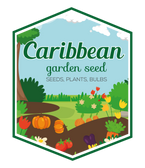
How to plant bitter melon seeds
What is bitter melon?
Bitter melon (Latin name: Momordica charantia) is a vegetable widely used in Asian cooking and traditional medicine.
it is not a type of apple or pear, though it is a relative of melons and gourds. This plant is part of the Cucurbitaceae family, including squash, courgette, watermelon, pumpkins, and cucumbers.
The bitter melon’s main feature is its fruit, which is similar in shape to a cucumber but often warty and even spiky. It has a distinct bitter taste, which is especially noticeable when raw.
Some of the best-known names for bitter gourd include the following:
- India and Nepal: karela
- China (Mandarin): kǔguā
- Japan: nigauri or gōyā
- Philippines: ampalaya
- Sri Lanka: karavila
- Thailand: mara
- GROWING
- bitter melon can be tricky in some climates, and it might not always be possible to grow outdoors in certain areas. However, read on to discover some top tips to ensure a great harvest no matter where you live.
-
Before you start thinking about planting bitter melon in your garden, there are a few key things to remember:
- Bitter melon is a tropical/subtropical plant, so it needs plenty of warmth and moisture.
- Seed germination is highly reliant on temperature.
- This is a vining plant, and it will need trellises to climb on.
- The plant produces separate male and female flowers, and it is not self-pollinating.
Knowing this in advance will give you a better idea of what to expect and allow you to manage the space in your garden. Based on this, you can also decide whether you’re going to need a greenhouse or whether you can grow bitter gourds in containers. So, with that in mind, let’s start with the basics of growing these plants.
How to plant bitter melon seeds
Start by picking the type of bitter gourd you wish to grow, and buy high-quality seeds from a trusted vendor. The seeds are roughly the same size and shape as pumpkin seeds but with a wrinkly shell. Due to the thick outer layer, bitter melon seeds should be soaked for around 24 hours before sowing to encourage germination.
Bitter melon seeds require the soil temperature to be at least 68°F (20°C) to germinate, so growing them in temperate climates can be tricky. Usually, for planting outdoors, you will need to wait until late spring to ensure that any danger of frost has passed and that the soil is warm enough. Frost can slow down the harvest a bit, so to save yourself some time, we recommend germinating them indoors.
Choose the best seedling pots
To germinate bitter gourd seeds, we always prefer using biodegradable seedling pots. These pots will give you more control over how much water and light each plant gets, and it also makes transplanting easier.
Removing the small plants from their seedling trays can often damage the roots or shock the plant when it is moved outdoors. When using biodegradable or compostable pots, you can bury the pots directly in the soil without damaging the fragile seedlings. The pots will decompose over time, providing the plants with additional nutrients along the way.

![[Seeds] - Caribbeangardenseed](http://caribbeangardenseed.com/cdn/shop/files/gift-card-gift-card-1_1024x1024_dfa857db-9150-4315-a362-7f0bb3fb9c47_60x28.png?v=1722895789)